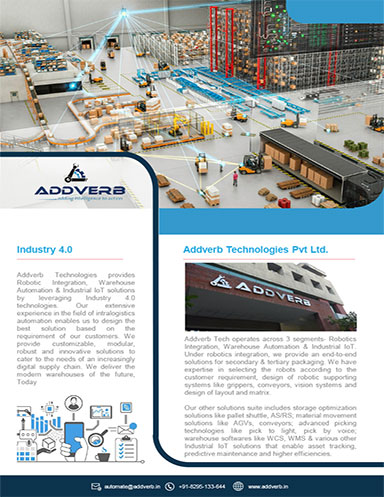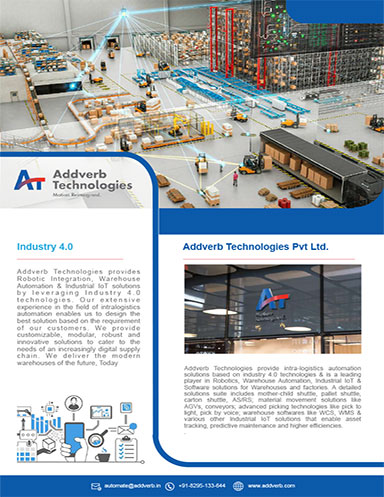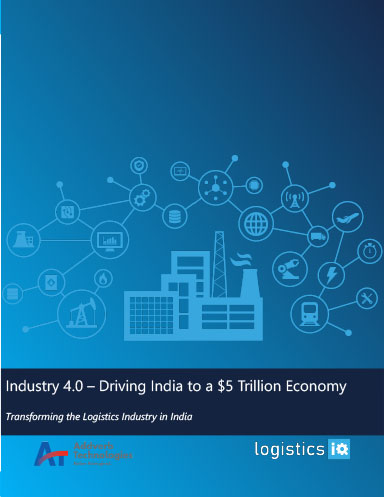Batch Picking Vs Wave Picking – What is what?
The differences between batch picking and wave picking, and when to use each one.
In the previous blog on ‘Different Types of order picking in warehouse’, we discussed briefly various types of order picking in a warehouse; in continuation to that, let’s delve in depth into the most common types of order picking, i.e., batch picking and wave picking, the differences between the two methods and when to use what.
Batch Picking
This is an order picking protocol that calls for the picker to compile a batch of the orders by picking from a single SKU or one SKU at a time. It helps to fulfill the order very fast by picking multiple orders at the same time. Single picker picks a batch of orders, which helps reduce repeated trips to the same location, essentially one location is visited only once by a picker. Let us illustrate this with an example;
- Order1: 3 soaps, 5 shampoos, 3 Gels
- Order2: 8 Shampoos, 5 Soaps
In case of batch picking, both the orders are combined for picking & when the picker goes to the soaps section, he picks all 8 soaps; and when he visits the shampoo section, he picks all 13 shampoos and then the 3 gels once. After that at the packing station, they will be packed into individual orders. In case of batch picking, many orders will include same SKUs, hence it is apt when your orders have minimal SKUs.
Batch picking is preferred when there is fewer no. of SKUs, typically 4-5 SKUs and each item is small, because this allows the picker to pick many items in his picking cart and bring them to the packing station. As it enables the picker to travel to a pick location only once while fulfilling many orders, it results in reduction of travel time as well as less congestion in the warehouse due to less traffic.
Batch picking is preferable when the warehouse size is smaller, as it helps in fast picking and less travel. In case of large warehouses, it is preferable when the SKU concentration at a location is high. Mostly, in case of batch picking, pickers use picking carts to pick and deliver the picked items to the packing stations unlike wave picking which utilizes conveyors, tilt-tray sorters etc.
Depending on the order volume, picking locations & manpower, warehouses can create one size batches, like all the batches have 50 orders per batch with an average no. of 3 SKUs per order. Or warehouses can also create multi-size batches, where in the first batch can be of 50 orders with an average of 3 SKUs per order, and the next batch is of 25 orders with an average of 4 SKUs per batch.
Further optimized paths for these SKUs picking can be suggested by WMS or WCS if it is in place, thereby ensuring highest levels of picking efficiency, reduced travel time and labour requirement.
Wave Picking
Grouping of orders into waves is the first step in wave picking, it can be done on a small number of orders like 4 or 5 or on a large number of orders, like hundreds. In wave picking, picker picks one order and one SKU at a time & orders are grouped depending on the inventory characteristics, shipping routes, delivery schedules, shipping carrier, or even the type of packaging. After the picking, all the products will be brought to a staging area where sortation of them into individual orders will happen.
It can be illustrated with an example below;
Let us assume the warehouse got 50 orders to be fulfilled within a shift, out of this 50, let’s say 20 orders consist items from cold storage area, 10 orders are to be shipped to a specific location, and another 20 orders are to be packed in a glass packaging. So, there will be 3 waves to fulfill these 50 orders, and these 3 waves can be scheduled at different times, for different zones. Once the items in a wave are filled, they will be brought down to sorting area & then packed.
Orders for which all the items are picked during the wave can be sent for packing or wait till all the items for the orders get filled and then sent for packing, accordingly, it is called fixed wave picking and dynamic wave picking, respectively.
Batch Vs Wave: Which is the best?
One important distinction between batch picking and wave picking is that batch picking requires just one order picking window per shift. In contrast, wave picking may include multiple waves per shift.
In batch picking, average cubic size of the orders plays an important role in achieving the best picking rate, for some small businesses and warehouses, the pick rate can go as high as 200+ order lines per hour from 60-70 order lines per hour for single order picking. In case of wave picking, logical order flows make it more effective than straight forward or discrete order picking process and for businesses with large SKUs, batch picking creates heavy traffic and damages the picking efficiency, hence waves are recommended.
In batch picking, a picker makes only one trip to a location, greatly reducing the travel time, congestion and accidents in the warehouse. Whereas in wave picking, picking is always under control as waves can be allotted as per the requirement, like different zones, different timings which gives flexibility in terms of planning or coordinating other warehouse activities such as replenishment, packing, dispatch…etc.
So, both the methods are better in their own way and increases the picking productivity & efficiency and choosing which method to go with depends on the nature of the inventory, order profile characteristics, and the KPIs..etc. As wave picking deals with multiple SKUs, and several waves would be performed in a shift, it calls for some kind of automation to yield the best results in terms of sorter, conveyors, WMS…etc.
Related White Papers
End to End Solution Automates Snack Brand Operations
Addverb Technologies creates automation solution, utilizing robotic packaging for product line. Download Now!
Warehouse Practices Analyzed for Operations Overhaul
Addverb Technologies' client replaces its distributor model by directly serving the retail outlets from its own warehouse. Download Now!
Industry 4.0 – Driving India to a $5 Trillion Economy
The logistics industry in India has had significant growth in performance since 2014; with the right combination of various government initiatives, eliminated inefficiencies in the logistics sector, rapid adoption of automation and data analytics, India will bring more money into its economy. Download Now!
Article Topics
Addverb Technologies News & Resources
Addverb collaborates with Purdue University on smart factory Addverb and Velociti Alliance partner on automation for c-store and grocery supply chains Addverb and McMurray Stern partner to deploy warehouse robotics to customers Addverb Technologies expands U.S. presence with R&D center in Silicon Valley Direct to Customer vs Reaching Customer via DCs Addverb Technologies and Davinci Micro Fulfillment partner on robotics Warehouse Order Picking Methods More Addverb TechnologiesLatest in Warehouse|DC
Cambium is on a Quest to Breathe New Life Into Old Wood Record High in Container Production Expected for 2024 IBM Investing $730 million to Expand Semiconductor Plant in Canada Indiana Tests Futuristic Highway that Can Charge EVs While Driving Week in Review: Baltimore Bridge Price Tag, FTC Fines Williams-Sonoma, and More GXO and Conair Open Maryland’s Largest Distribution Center Robots are Enhancing Human Workers, Not Replacing Them More Warehouse|DC
















